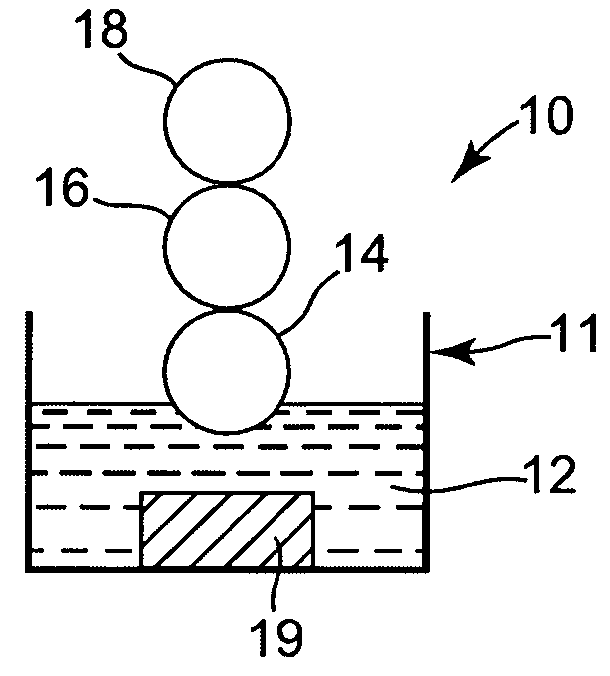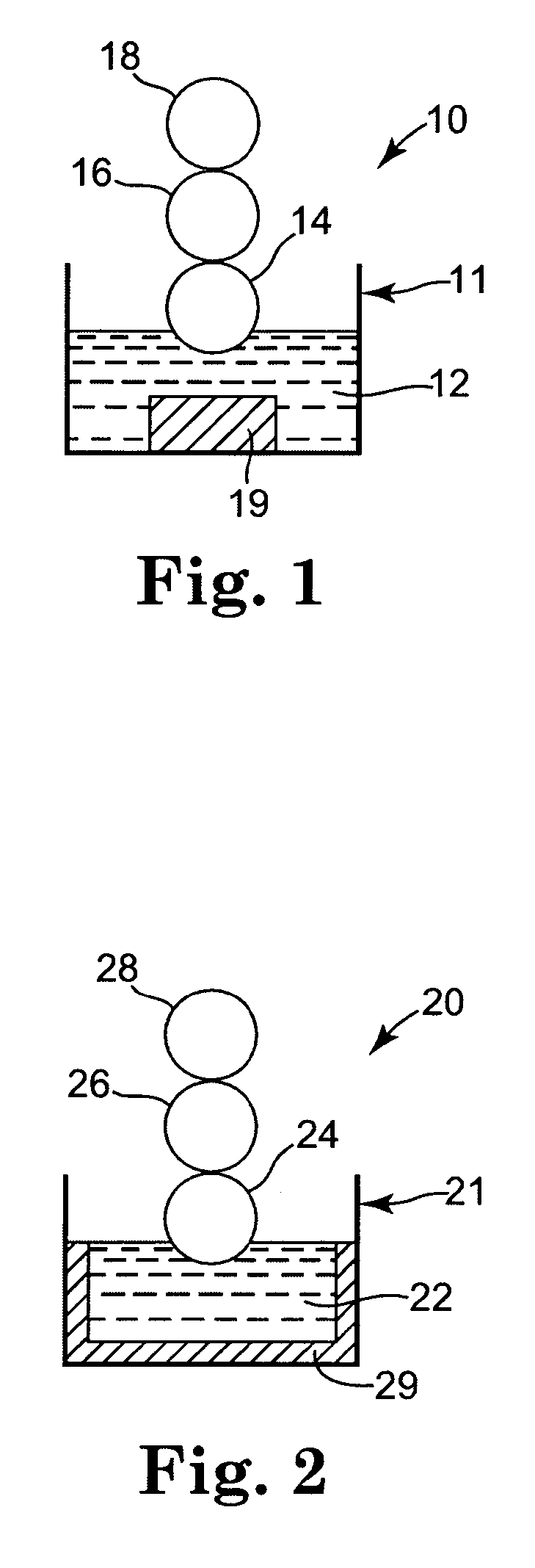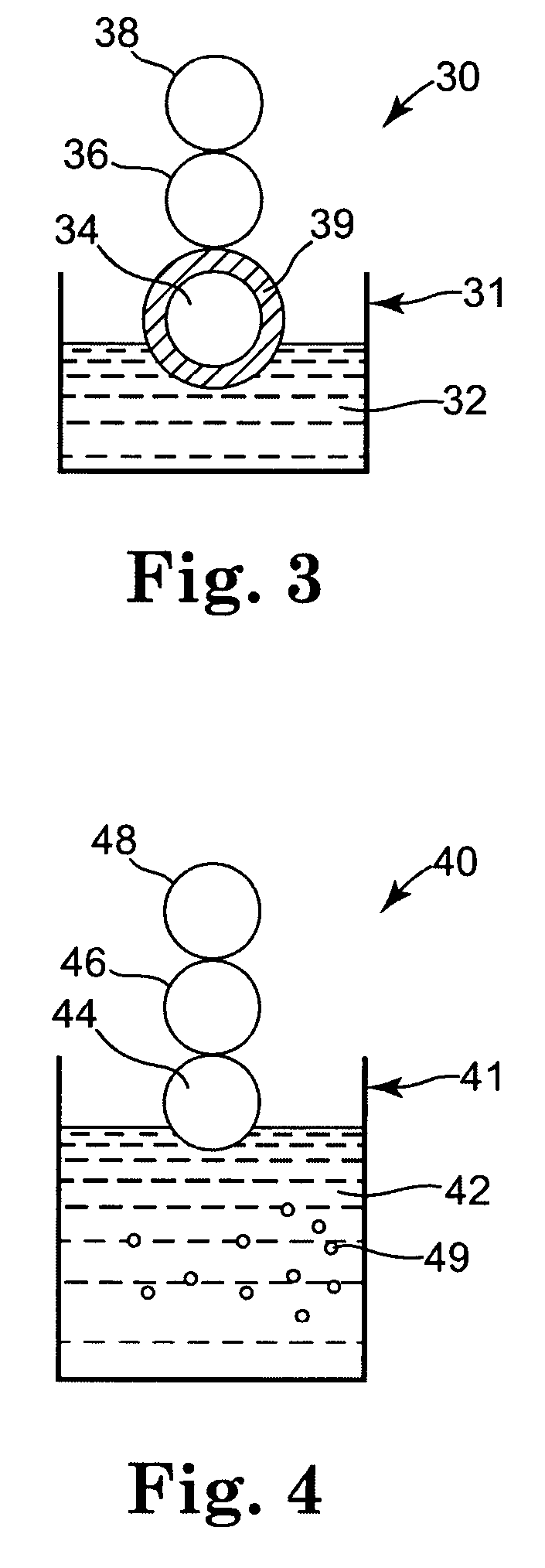Charge adjuvant delivery system and methods
a delivery system and adjuvant technology, applied in the field of toner systems, can solve the problems of uniform image density from copy to copy, prior art exhibits drawbacks relating to the stability of their image, etc., and achieves the effects of reducing the optical density of images, limited solubility, and increasing the conductivity of conventional liquid toners
- Summary
- Abstract
- Description
- Claims
- Application Information
AI Technical Summary
Benefits of technology
Problems solved by technology
Method used
Image
Examples
Embodiment Construction
The system of the present invention uses solubility and concentration factors to deliver charge control adjuvant to a toner composition as needed to provide proper charge balance. Surprisingly, systems of the present invention may be provided that favorably modulate both bulk conductivity and charge per mass, resulting in excellent image generation.
Turning now to the drawings, FIG. 1 shows an end view in partial cross-section of an embodiment of a system 10 having a liquid toner composition 12 disposed in toner supply container 11. Toner is conveyed to a light sensitive temporary image receptor (organic photoreceptor or “OPC”) 18 by conveyer rolls 14 and 16. Alternative conveying apparatuses may be used as will be apparent to the skilled artisan, such as pumping the toner composition through supply lines, and the like. Charge control adjuvant element 19 is provided in the toner composition to provide charge control adjuvant in an amount in excess of the solubility of the adjuvant...
PUM
 Login to View More
Login to View More Abstract
Description
Claims
Application Information
 Login to View More
Login to View More - R&D
- Intellectual Property
- Life Sciences
- Materials
- Tech Scout
- Unparalleled Data Quality
- Higher Quality Content
- 60% Fewer Hallucinations
Browse by: Latest US Patents, China's latest patents, Technical Efficacy Thesaurus, Application Domain, Technology Topic, Popular Technical Reports.
© 2025 PatSnap. All rights reserved.Legal|Privacy policy|Modern Slavery Act Transparency Statement|Sitemap|About US| Contact US: help@patsnap.com



